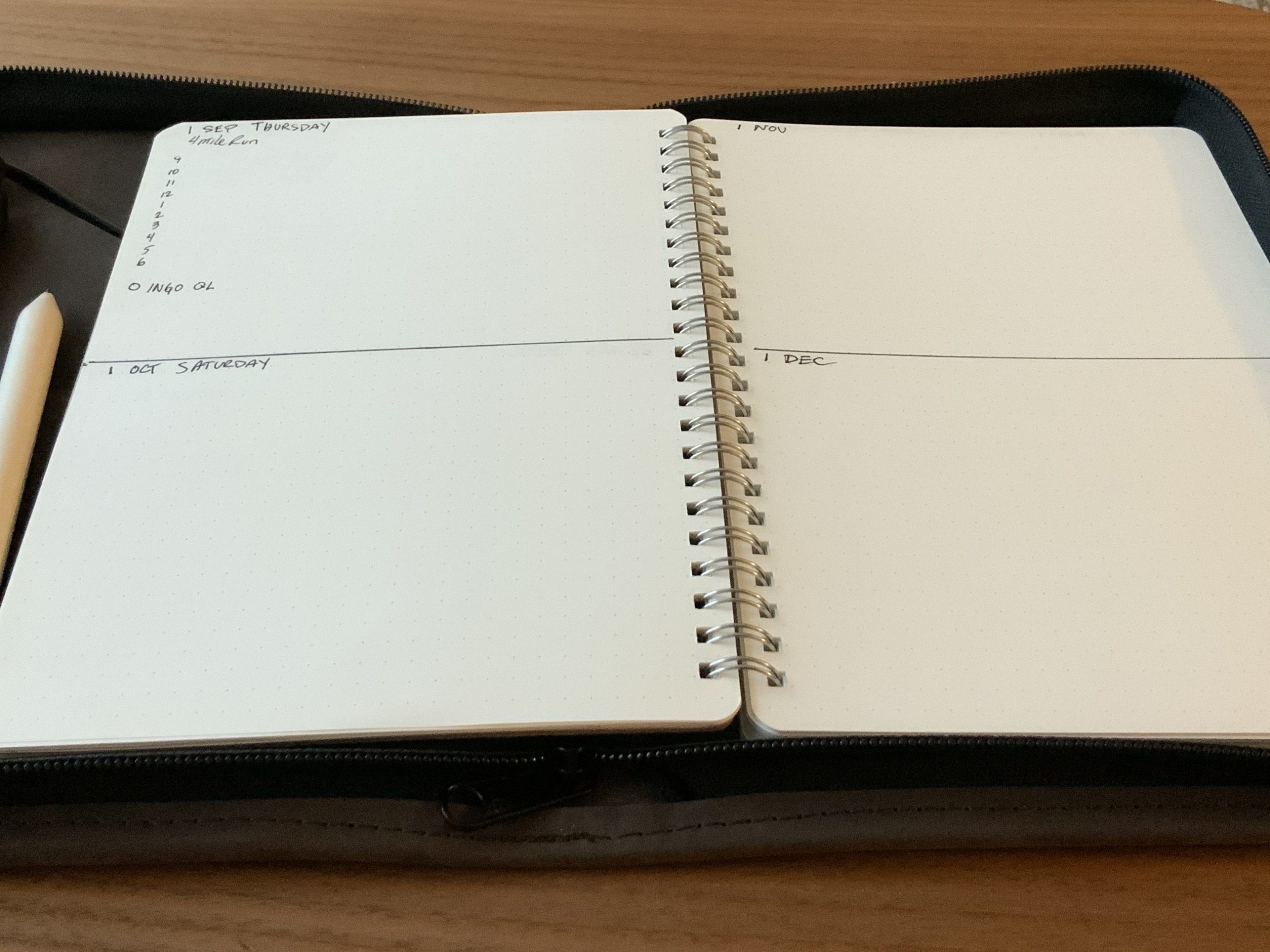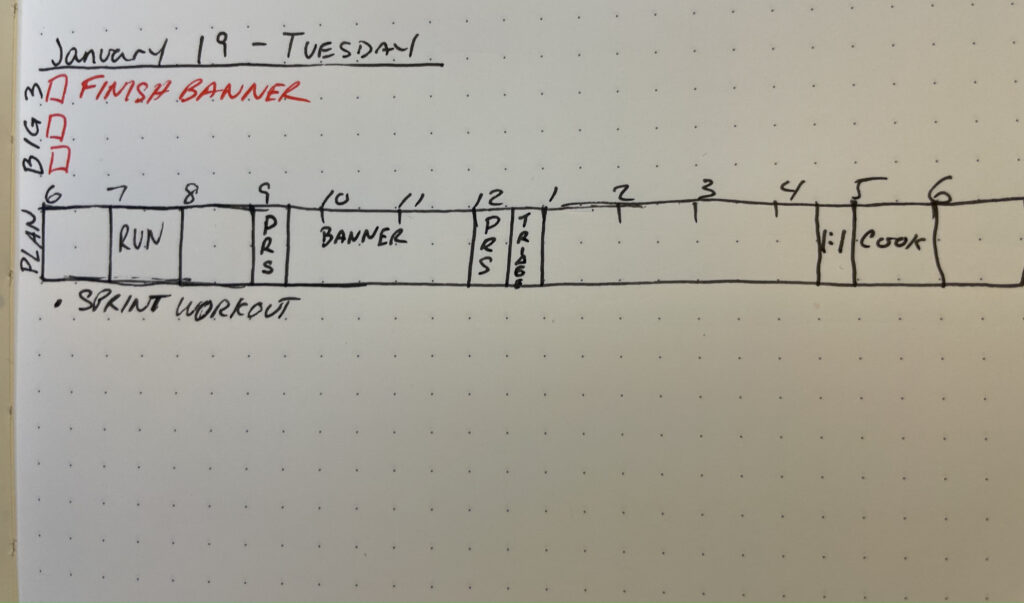As I mentioned in my post about recurring journals, I decided to write a python program to create a PDF that implemented my riff on the Da Capo journal. I finished it enough to share, and put it on GitHub. It’s called Page-o-Mat.
To make it more generally useful, instead of hard-coding this particular journal, I made it read a configuration file that can be used to describe lots of journaling styles.
Right now, the paper and page types are what I needed for my 2023 journal. I am about to do a test-run with getting it printed on LuLu. After that, I might make some more page templates.
The config file is in YAML. You could just list each page you want one-by-one, but to make things easier, there are a few ways to create enumerated pages.
- Any page could have a count, which just repeats that page
- Any page can have a variant list, which repeats the page, setting a variable that can be used in titles
- Pages can have lists of sub-pages, and so on.
- Pages can have sections
In the code, it’s implemented with nested loops and recursion. The indices of those loops are exposed to the config to use in date math, so that any section of any page can have a date calculated for it. Most journals would probably have sequential dates, but a recurring journal wants you to keep cycling back to the beginning of the book, so the date math is fairly complicated.
There are documented examples in the repo that (hopefully) explain this better. Start with daily.yaml, which is just a 365 page daily journal. 2023-recurring-journal.yaml shows the more complex example.



